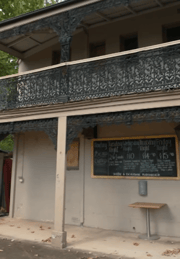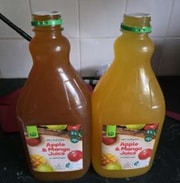Hidden Aussie banknotes in wallet could be worth fortune
By
Gian T
- Replies 0
They say value can turn up in the most unexpected places, and that's certainly the case with things you might have forgotten.
Tucked away in quiet corners of the home, what once seemed ordinary might hold a little more significance than first thought.
Changes over time often leave behind pieces of the past, and while their purpose may have faded, their worth might surprise you.
Let's take a stroll down memory lane. The Australian $1 and $2 notes were first introduced in the 1960s, only to be replaced by the familiar gold coins in the 1980s.
The rest of the paper currency followed suit in the 1990s, making way for the polymer notes we use today.
But before you dismiss those paper relics as outdated, you might want to give them a second look.
According to Simon Noble of Noble Numismatics, certain old paper banknotes can be incredibly valuable, especially if they're in good condition or bear particular signatures.
For instance, 1966 notes signed by Reserve Bank governor Herbert Coombs and Secretary of the Treasury Roland Wilson are highly sought after by collectors.
Similarly, 1968 notes with Coombs and Richard J. Randall's signatures are considered even rarer treasures.
But that's not all—there are also star replacement notes, which feature an asterisk after the serial number.
These were issued to replace notes with printing errors, making them quite the collector's item. If you have one, you could be sitting on a goldmine.
So, what kind of prices are we talking about? Perth coin dealer Sterling and Currency has reported that the rarest $1 notes can fetch up to $7,500, while the rarest $2 notes might command a price of $5,000.
And it doesn't stop there—the rarest $5 paper banknotes have been known to reach $6,500, with $10 notes selling for as much as $6,000.
The stakes get even higher with the $20 paper banknote, which can soar up to $19,500 for the rarest note in perfect condition.
Rare $50 notes have been valued up to $950, and the rarest $100 notes have hit the $600 mark.
While these old paper banknotes remain legal tender, don't expect your local shop to welcome them with open arms.
Retailers are typically hesitant to accept them, but don't rush to the bank to exchange them for their face value.
It's worth consulting with a reputable banknote or coin dealer first to see if you could be holding onto a valuable piece of history.
And let's not forget about today's polymer banknotes, which can also be worth more than what's printed on them.
Matthew Thompson from Thompsons Coins advised looking for 'solid' serial numbers, like '888888', or palindrome serial numbers that read the same forwards and backwards, such as '1234321'.
These unique details can significantly increase a note's value, sometimes into the hundreds or even thousands of dollars.
 Got any old paper notes lying around at home you might want to check again? Ever spotted a strange serial number or something unusual on a note and wondered if it could be worth more? Let us know in the comments below.
Got any old paper notes lying around at home you might want to check again? Ever spotted a strange serial number or something unusual on a note and wondered if it could be worth more? Let us know in the comments below.
Tucked away in quiet corners of the home, what once seemed ordinary might hold a little more significance than first thought.
Changes over time often leave behind pieces of the past, and while their purpose may have faded, their worth might surprise you.
Let's take a stroll down memory lane. The Australian $1 and $2 notes were first introduced in the 1960s, only to be replaced by the familiar gold coins in the 1980s.
The rest of the paper currency followed suit in the 1990s, making way for the polymer notes we use today.
But before you dismiss those paper relics as outdated, you might want to give them a second look.
According to Simon Noble of Noble Numismatics, certain old paper banknotes can be incredibly valuable, especially if they're in good condition or bear particular signatures.
For instance, 1966 notes signed by Reserve Bank governor Herbert Coombs and Secretary of the Treasury Roland Wilson are highly sought after by collectors.
Similarly, 1968 notes with Coombs and Richard J. Randall's signatures are considered even rarer treasures.
But that's not all—there are also star replacement notes, which feature an asterisk after the serial number.
These were issued to replace notes with printing errors, making them quite the collector's item. If you have one, you could be sitting on a goldmine.
So, what kind of prices are we talking about? Perth coin dealer Sterling and Currency has reported that the rarest $1 notes can fetch up to $7,500, while the rarest $2 notes might command a price of $5,000.
And it doesn't stop there—the rarest $5 paper banknotes have been known to reach $6,500, with $10 notes selling for as much as $6,000.
The stakes get even higher with the $20 paper banknote, which can soar up to $19,500 for the rarest note in perfect condition.
Rare $50 notes have been valued up to $950, and the rarest $100 notes have hit the $600 mark.
While these old paper banknotes remain legal tender, don't expect your local shop to welcome them with open arms.
Retailers are typically hesitant to accept them, but don't rush to the bank to exchange them for their face value.
It's worth consulting with a reputable banknote or coin dealer first to see if you could be holding onto a valuable piece of history.
And let's not forget about today's polymer banknotes, which can also be worth more than what's printed on them.
Matthew Thompson from Thompsons Coins advised looking for 'solid' serial numbers, like '888888', or palindrome serial numbers that read the same forwards and backwards, such as '1234321'.
These unique details can significantly increase a note's value, sometimes into the hundreds or even thousands of dollars.
Key Takeaways
- Australian paper banknotes, especially rare ones, can be valuable and are sought after by collectors.
- Certain paper banknotes from the 1960s with specific signatures or star replacement notes can fetch high prices.
- The rarest paper banknotes can sell for thousands, with a $20 note potentially reaching up to $19,500 in perfect quality.
- Although paper banknotes are still legal tender, banks will typically redeem them at face value, but it's advisable to check with reputable dealers as some may be worth more due to unique serial numbers or other features.








